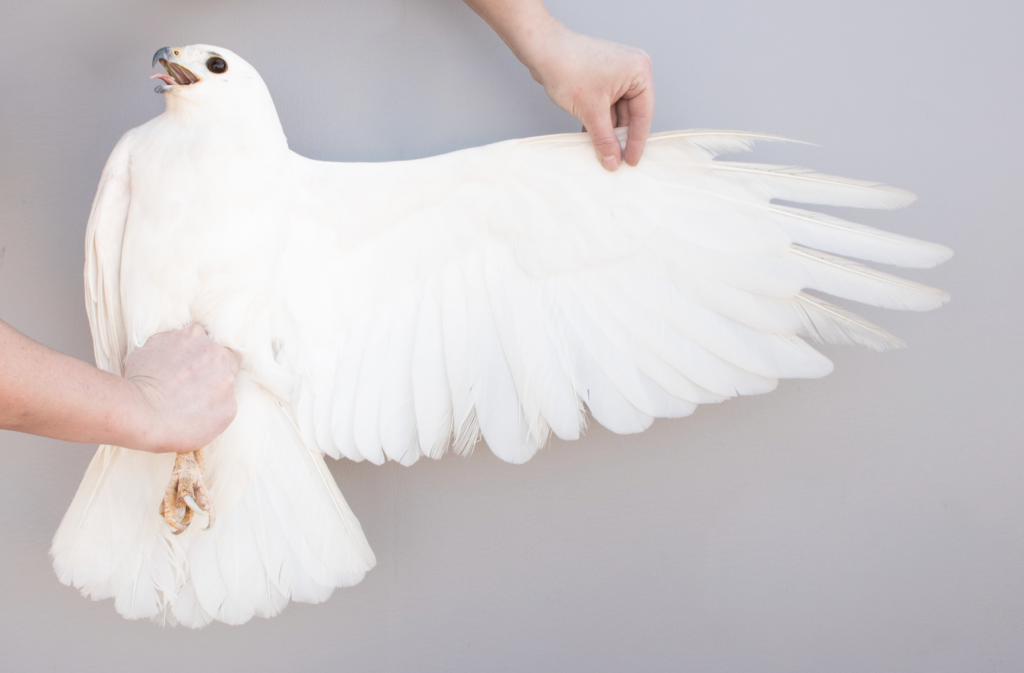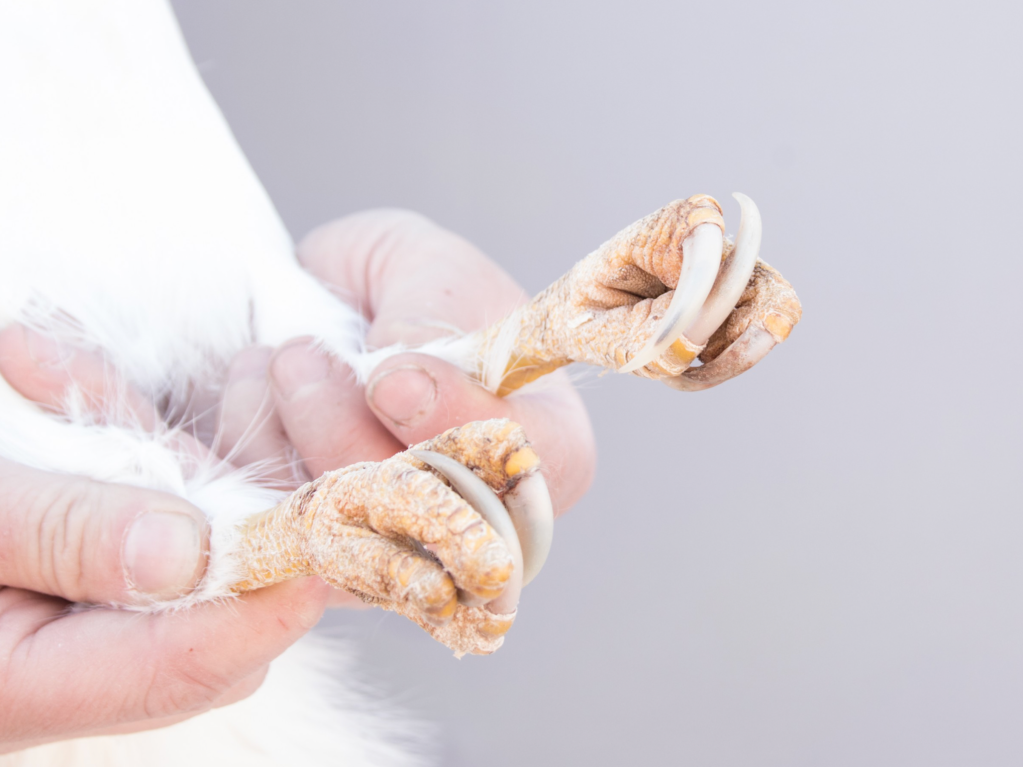
Some incredible luck struck on a recent trip to Oklahoma (more on the trip soon!) that included some core project folks as well as a few keen Cornell University undergraduate students. While on the trail to trap harlani and intergrade types, Irby Lovette and undergrad Mei Rao came across a striking all white Red-tailed Hawk. After the rest of the group caught up, we had the incredible fortune to capture the individual.

One very interesting take away from this individual is the importance of pigment for feather durability and structure. In both of the wing out images above, the molt limits in the primaries are strikingly obvious, with the old feathers being extremely worn. Without melanin in these feathers, they degrade substantially.

Another interesting note is that at first glance the bird appears to be entirely white, but there are flecks of color in a few locations on the body. In particular the bird has a few dark, fairly normally pigmented feathers on the nape, and the rachis of the central tail feather is partly pigmented orange. There are many mutations that might cause this look to a bird and it is impossible to know exactly without a molecular analysis, but because of the normally pigmented iris, bill, and the bits of color in the few locations on the body, we do know it is not albinism. Our guess is that the bird might be an example of a plumage aberration that slowly turns the bird white across its life called ‘Progressive Graying’.

Also notable to us were the white talons, with bits of pigment in a few. It is curious that the irises have normal pigment, and the bill seems to as well, but the talons are affected. Without knowing for certain at the moment, one supposition is that the rate of growth in the talons might be much higher than the bill, or perhaps the localized effect of the aberration is just random and for no reason other than chance has not affected the bill.
Because the individual lacks any plumage features, it is next to impossible to assign it to a subspecies or to know at all where this bird might breed (morphometrics do help, but not entirely). After some deliberation, the group decided to place a tracking unit on the bird. We’ll be sure to post about its full cycle wanderings when we receive the data, but our guess is that the bird is actually a harlani and ends up somewhere in Alaska this summer. We shall see!
To see more of this bird, check out the eBird checklist: https://ebird.org/checklist/S163166668
All of these photos were taken by Nicole Richardson and are deposited in the Macaulay Library.

This is a resident bird that I have been monitoring for many years. He along with his normal colored mate, raise a healthy clutch annually.
I am very interested in his flight patterns, if you are willing to share. If he does leave the area, it’s not for very long.
His coloration has not changed much at all over the years. The dark brown spots do change but he always molts out to approximately 98% white. I do have permission for the property on which they nest. It would be great to attach a tracking device on one of their offspring to later find them in their adult plumage. Feel free to contact me privately if this is of any interest.
LikeLike
Hi Phil, I’d love to hear more! Can you send me an email at bwr46 AT Cornell.edu?
LikeLike
40 years ago I trapped an white red tail near Arcadia, Oklahoma. It was a breeding resident male. I climbed the nest and the babies appeared normal. I have pictures if interested.
LikeLike
Definitely interested in photos! If willing, send along to bwr46 AT cornell.edu
LikeLike